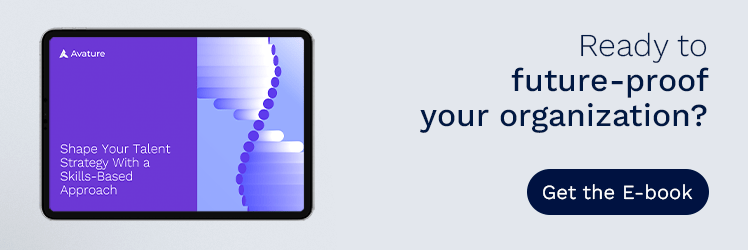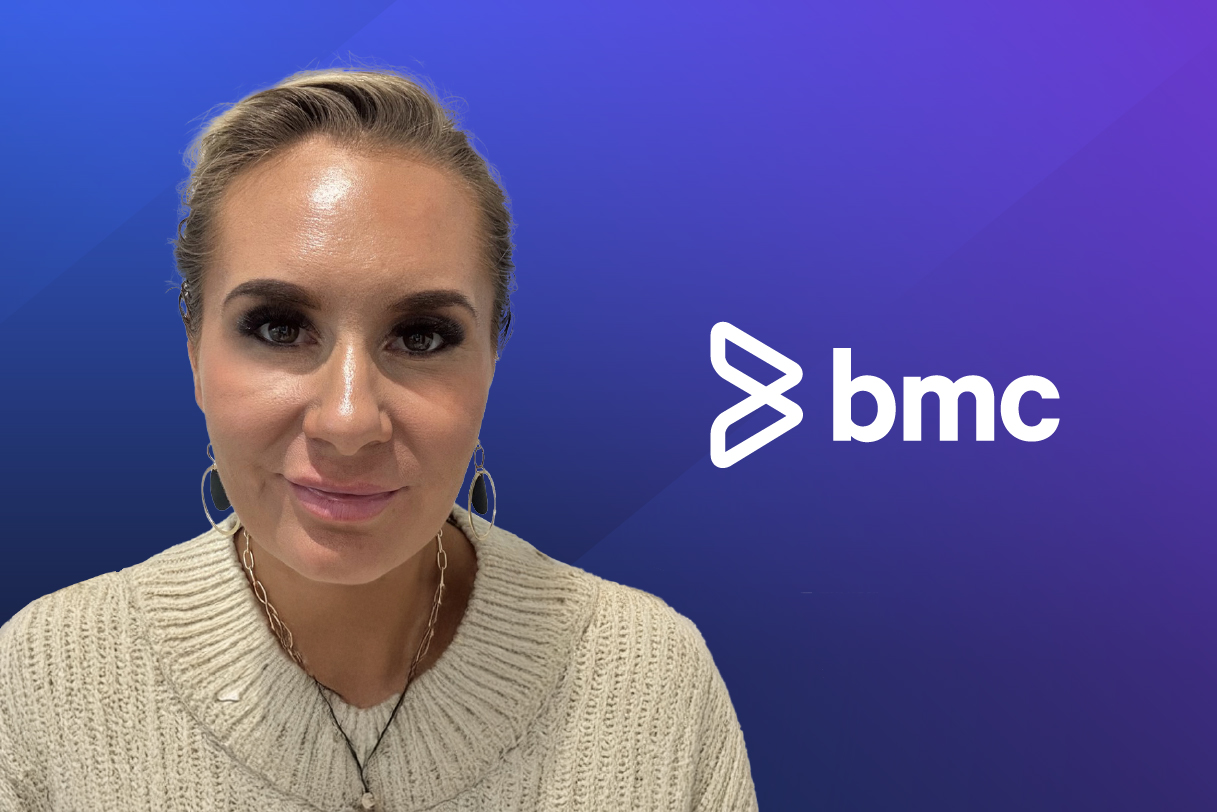There’s no one in the world of HR right now who isn’t thinking about the impact of artificial intelligence. We all feel the pressing need to understand how AI will reshape the way we work, who we select to work with us, how we select them and how we can ensure that they select us.
At the same time, new strategies and tools are springing up almost weekly, each promising to help you get ahead, to out-think and out-maneuver the competition, with many claiming to predict an unpredictable future. Caught up in an apparent maelstrom of risk and opportunity, talent leaders would be forgiven for feeling a little overwhelmed.
It’s therefore reassuring to discover in this podcast episode that even Andrew Dennan, Head of Volume Recruitment at Emirates, the biggest international airline in the world with 60,000 employees from 170 nations, doesn’t have all the answers. However, he does have an approach he trusts, as well as plenty of sage advice for anyone looking to navigate uncertain times proactively and with an optimistic calm.
From getting the business behind digital transformation to predicting how skills-as-a-currency will define the career pathways of the future, Dennan’s vast experience as a talent practitioner and keen interest in the practical applications offered by AI make for a fascinating, wide-ranging discussion.
HR Outsiders Are Challenging the Tried-and-Tested
When Andrew Dennan made the decision to move away from the trading floor and into the world of talent acquisition some twenty years ago, he knew he was treading an unconventional path. With him, he was bringing ideas that were equally unconventional at the time but are now commonplace in the world of skills-based recruiting.
I came in with almost a commodity view. These were boxes, and everyone had boxes within them. And we needed to look at them that way and then put them in the right places. It scared a lot of people early on.”
Andrew Dennan
Head of Volume Recruitment at Emirates
Fortunately for Dennan, he found in the Middle East an open-mindedness among the leadership, a desire to challenge the status quo and a willingness for him to pursue and give substance to his ideas – something he believes will put him in good stead for the coming years. “I love the Middle East. it’s a phenomenal environment. If you’re entrepreneurial and innovative, you couldn’t find a better place. In talent acquisition at the moment, to have visionaries guiding you and encouraging you, like I have, is all you need because that’s going to be the difference in the next decade.”
Today, however, the world of HR is very different. People are joining from different walks of life, bringing with them diverse experiences and fresh approaches—something Avature’s CEO Dimitri Boylan welcomes: “There are a lot of organizations where the HR people have really diversified experiences and skill sets and are bringing new ideas to the table. It helps to have people that are just more apt to think out of the box and try some new things.”
Talent Teams are Now Recognized Strategic Enablers of the Business
However, a change in the profile or person entering the world of HR and talent acquisition isn’t the only change Dennan and Boylan have witnessed over the course of their careers. As we move further from the rigid mass models of the last century, a greater appreciation of people as a differentiator to business success is driving a change in the way organizations hire and the importance given to the talent acquisition function.
As Boylan is keen to impress, “over the last decade or so, the idea of talent has just fine-tuned a little bit. There’s a stronger connection between talent and success of the company than there was 20 to 25 years ago.”
This growing recognition of HR as a strategic enabler of the business is something Dennan has picked up on in his own line of work. And he believes if an organization fails to recognize this, they’re jeopardising their chances of success.
HR wasn’t really there in the discussions at the beginning. We built projects around assets and infrastructure. Whereas now people are the requirement to deliver. So we’ve had to change that concept and take it to the top level to make sure that they engage and involve HR. Otherwise, the success will not be there.”
Andrew Dennan
Head of Volume Recruitment at Emirates
AI Currently Offers Biggest Gains in the World of High-Volume Recruitment
For Dennan and Emirates, the requirement to hire the best talent in a high-volume environment is further complicated by the relatively low population density of the Middle East coupled with the demand for specialized roles particular to the aviation industry: “Customer service is incredibly busy, as always, as we grow. And then there are operators and ground staff as we continue to increase [the number of] planes. There’s a requirement for bodies – and quality. What we’re dealing with on a daily basis, you don’t get it wrong – so you have to have the quality there.”
While the challenge might seem intimidating at first, Dennan is confident that with the right approach and the growing power of the tech available today, high volume needn’t mean high stress.
With Emirates, the brand attracts. We get over three million applicants a year. But to deliver that to business is a difficult game. You have to be faster. You have to be smarter, and you have to know your business… We work a lot around AI, we have for some time now, to improve our time to deliver.”
Andrew Dennan
Head of Volume Recruitment at Emirates
It’s clear AI is already facilitating new levels of efficiency in the area of high volume, but it isn’t increased productivity that most excites Dennan about its potential. The way in which AI is supporting the more strategic functions of TA through deeper exploration of data and the patterns it can unearth is lighting new avenues for the curious and creative talent specialist to explore.
AI is very good at looking at large sets of data and finding patterns. I mean, humans can find patterns too, but not at the scale that AI can. It’s finding patterns that we’ve never been able to discern.”
Dimitri Boylan
CEO of Avature
Since the effectiveness of AI systems is intimately linked to the amount of relevant, contextualized data used to feed them, those working in the high-volume sector, with its vast number of applicants and highly process-driven approach, are positioned to gain most from AI’s deeper level of insight.
What we get with high volume, with that amount of applicants, is that data. And how we dissect it and how we use AI around that to target what we’re looking for now, but also in the future, gives us a competitive advantage. AI will give us that capability. It’ll give us those nuggets, those things that mean we’ve just got a little bit more information than anybody else. So that gives us the signal that ‘you need to go look there’.”
Andrew Dennan
Head of Volume Recruitment at Emirates
With AI, There’s No Imperative To Have All the Answers Yet – but You Need To Be in the Conversation
As exciting as these early efficiency gains and insights are, we can’t expect to grasp the full potential of AI, let alone harness it, at this stage. There will be an element of trial and error involved, as Dimitri Boylan, CEO of Avature, is quick to point out.
There’s a little bit of throwing it at the wall. And you have to recognize that you’re throwing it at the wall. And there is a little bit of time you need to spend sort of starting to architect a more complete vision. There is no imperative to have a complete vision right now. Other people don’t have it yet… Things are changing relatively quickly, and you need to stay flexible in your approach to what you do.”
Andrew Dennan
Head of Volume Recruitment at Emirates
Dennan and Boylan are aligned on the need for TA heads to be curious and experiment with their models while accepting that wrong turns are inevitable.
We will make mistakes. None of us will get this right the first time. Having an idea and a model is great, but everyone has a plan until you get hit in the face, as Mike Tyson would say. So, reduce the risks, have an idea, but take a punt.”
Andrew Dennan
Head of Volume Recruitment at Emirates
However, an ability to stay grounded in the face of setbacks and successes isn’t the only advice for those trying to make sense of shifting sands. There is a need to be realistic about where machine learning is in its maturation and to be wary of those taking advantage of people’s confusion and making promises that they’re not yet able to keep.
“There are some uses [of AI] that people are claiming to have and you know that it can’t really be used that way yet,” stated Boylan. Dennan agreed that it’s prudent to temper our enthusiasm with a dose of realism: “They’ll come and they’ll go and you’ve got to be cautious with that… I have a vision of where I would like recruitment to be in a mature model. But a lot of the parts aren’t there yet. And they won’t be there for a while.”
So, how do we negotiate such times, in which risk, opportunity and the pressure to keep up seem to be swirling all around us? Dennan says he’s happy keeping abreast of the conversation, staying flexible, educating himself and his colleagues and making sure that when he’s confident it’s time to break from the pack, he and his team have the fundamentals in place to do so.
You don’t always want to be the farthest out in the water when the shark’s around… But you have to be on top of it [advances in AI]. You have to be looking for that next move. If you’re not in it already, the potential is you’ll never catch up.”
Andrew Dennan
Head of Volume Recruitment at Emirates
Getting the Right People in Lock-Step for Success
The introduction of AI as a potential game-changer and the uncertainty that brings has meant that digital transformation is now an ongoing process, one in which agility is fundamental, as businesses respond and strategies evolve over time. Dennan and Emirates are keen to avoid the temptation for quick fixes and instead invest in technology that can adapt in line with business needs. For Dennan, it’s clear that the organic build “will come from a certain level of vendors that will give us a play for the long term.”
Getting the right partner and technology in place is, of course, essential to a successful digital transformation, but so too is ensuring that everyone within the organization is on board. With talent strategies touching every part of the business, it has never been more important to collaborate effectively with key stakeholders in order to choose the right path forward and then ensure the buy-in is there to reach your desired destination. As Dennan shared, it’s an approach that has served him well at Emirates.
Build the model from the ground up. Be sure to test, trial, sandbox – whatever you need to do – but get smart people in to look at it with you. That’s key. I ask a lot of smart people what they think. Would they be part of this? Would they go through this process? Would they enjoy it? Could this be something that if they were hiring someone, they would want to see?”
Andrew Dennan
Head of Volume Recruitment at Emirates
Boylan stated that it is exactly this type of tight collaboration between the IT people and the business at Emirates that caught his attention: “I can’t say that I see that across the industry. There’s a lot of disassociation. It’s separate objectives.”
Dennan puts this down to a clear vision at the top of the business, with the leadership recognizing the need for everyone to be ‘at the table on a full-time basis, not just every now and then.’ Dennan shared how this works in practice and why it’s essential that everyone is pulling in the same direction.
The approach is a little bit more collaborative. I’m in there as a business lead – with a tech background as well – that brings everything together and has that overall picture in mind of how this should look. And we have the other areas: product, IT, HR Tech and the business itself coming together. You just can’t afford not to [involve everyone] because if you lose a year or two building something that’s obsolete straight away, then you’re four years behind and it’s over.”
Andrew Dennan
Head of Volume Recruitment at Emirates
Although it’s one thing to get everybody sat around the same table, Dennan is clear-eyed that for a digital transformation to work effectively, the importance of having a strategy for change management that involves the end users cannot be overstated. “It’s their pain points that will get the buy-in, get the engagement and make the thing work… Everyone’s different. So how do I make that work for everybody?”
And as HR teams seek to provide creative solutions with digital transformation and AI, Dennan believes an unexpected opportunity has arisen to correct a historic mistake.
It’s incredibly exciting. I think we, as a community, made a few mistakes in the last decade or so. We processed everything out of TA – we lost the fun. We lost the spark, the interest, the curiosity. What AI has given us is the opportunity to bring smart people back into the conversation, to look at it and go: ‘ok, this is pretty cool. Where can we take that?’”
Andrew Dennan
Head of Volume Recruitment at Emirates
Skills and AI: the End of the Traditional Career Ladder?
One such area where both agree artificial intelligence can already add true value is in the skills-based paradigm.
In the world of HR software, it’s sometimes easy to forget that the introduction of AI isn’t just a technical concern; it’s a context. In this radical reshaping of the world of work, jobs will disappear and new ones appear, upskilling will be essential and those recruiting for these new roles will have to look beyond previous job titles alone.
The skills-based approach offers a response to this thoroughly modern issue, and AI the means by which to execute it at scale. Already, its enhanced capability in pattern recognition is helping to redefine career pathways and replace the traditional concept of a career ladder with career lattices or, as Dennan sees them, train tracks.
HR has [traditionally] been very singular in its view. It’s always been, you know, ‘you’ve got a direct vertical in your career’. And what’s opened up within the skill discussion is now what I call ‘train tracks’. Your ability to get to Grand Central is multiple. You’ve just got to understand what you pick up along those tracks and which way you go to get you there. You could go eight different ways and come back into two different stations before you hit Grand Central. But the ability there is to be able to do that now is there.”
Andrew Dennan
Head of Volume Recruitment at Emirates
Talent Management Is Starting To Look a Lot Like Talent Acquisition
How the skills-based approach plays out in practice will have a huge knock-on effect on both the way younger generations approach their careers and how HR reimagines the talent acquisition and talent management functions. Skills will become, in effect, the new currency of work, as Dennan demonstrates by contemplating the mindset of an employee looking to grow their career.
I’m sitting here in a 100,000-employee environment. How do I get there [to the next step of the ladder] when there are 50, 100, 200, 1,000 people in the same vertical? A smart person would start going, ‘Where are the skill sets? Where do I get them?’. That’s going to be the difference.”
Andrew Dennan
Head of Volume Recruitment at Emirates
This is something that Boylan is already seeing with ambitious employees at the outset of their careers, and it’s placing demands on HR teams to provide opportunities for growth and clearer career pathways: “They won’t stay if they’re stuck in a box. You can’t retain people without a good internal mobility program anymore… because the younger generation just expects to be given a very different challenge after three or four years.”
Once again, technology offers only part—albeit a key part—of the solution. If talent teams are to accommodate this new paradigm, they must also rethink how their organizations approach performance reviews and provide upskilling opportunities. And as talent management turns to similar means and evaluation criteria as we’re seeing in talent acquisition, implementing processes and tools that obtain quality data to feed back into the strategy will become increasingly necessary.
The performance review process is much more agile because people are moving around. So you need to be better at performance review and you need to be better at setting expectations, because if employees are going to move to three different jobs over ten years, we need the data about how they performed in each one of those roles. So, I would say talent management is starting to look a lot more like talent acquisition.”
Dimitri Boylan
CEO of Avature
As the conversation draws to a close, we’re left with plenty to ponder. These are unstable times. There’s little doubt that AI, in terms of its impact on both tech and the wider talent landscape, will make digital transformation an ongoing concern. While nobody is expected to have all the answers yet, it’s important that we begin to ask ourselves the right questions and make sure our organizations are agile enough to respond when new risks and new opportunities present themselves.




